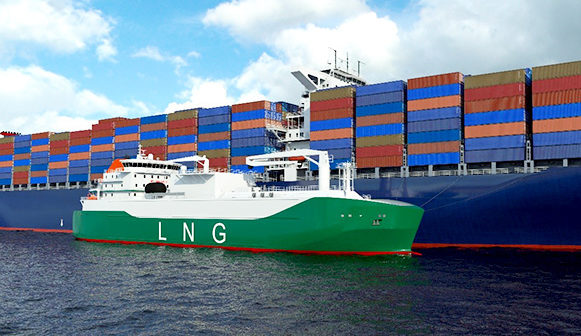
American class society ABS has granted approval in principle (AIP) to the conceptual design of carbon fibre LNG fuel tanks, inspired by techniques common in the space industry.
The news marks a milestone in the SpaceTech4Sea project, which sees ABS, OceanFinance and Cimarron Composites joining forces to adapt composite technologies developed for the space industry to LNG shipping.
Backed by €1m funding from the European Union, the project explores whether composite technology, which is lighter and more cost-effective, offers a competitive alternative in LNG as marine fuel designs, principally for short sea shipping.
“The potential of this technology to reduce barriers to the utilisation of LNG as fuel for short sea shipping is significant. This composite technology has proven itself in other industries; we are committed to learning how to safely apply those lessons to benefit the maritime industries,” said ABS vice president for global gas solutions, Patrick Janssens.
“This is an exciting opportunity for us to apply our aerospace heritage to a marine application. Reducing the mass of components is very important to both aerospace and marine applications,” said Cimarron Composites owner and chief executive Tom Delay.
“It is in our future plans to examine the commercial application and see how this game-changing product will benefit the maritime industry. LNG as marine fuel has just won a strong ally,” said Ocean Finance managing director, Dr Panayotis Zacharioudakis.
The joint team’s goal is creating tanks which will attract newbuildings and LNG as a marine fuel retrofits by cutting costs, reducing weight and increasing vessels’ cargo capacity. Although the technology can have a wide range of applications, the SpaceTech4Sea project focuses initially on high-speed vessels with small to medium tank capacities. It offers weight savings of up to 80% over existing equivalent LNG tank designs, is not affected by corrosion, and also introduces space technology safety standards to marine operations.
Attica Group, owner of Superfast Ferries, Blue Star Ferries, Hellenic Seaways and AML, is following the SpaceTech4Sea with interest and is evaluating the technology for future projects.
“The AIP of the ultralight composite tanks for marine use constitutes a major factor in the design and increases the potential of using them both in retrofits and in newbuildings of weight sensitive LNG-fuelled vessels,” said Costis Stamboulelis from the Attica Group.
While the tanks are currently made by hand, the project aims to adopt a highly automated production line to ensure a competitive pricing level.
The AIP provides guidance on the analysis and testing required by the rules and standards under which the composite tank technology can be approved for marine applications.

Carbon fiber is not recyclable and has very specific physical properties (its anisotropic nature would make it fatally vulnerable to the slightest impact or collision), dunno if can be made to suit the marine environment. Also composite structures are very difficult to inspect for structural soundness (CF would need ultrasound scans) and would introduce new cumbersome routines in vessel maintenance.